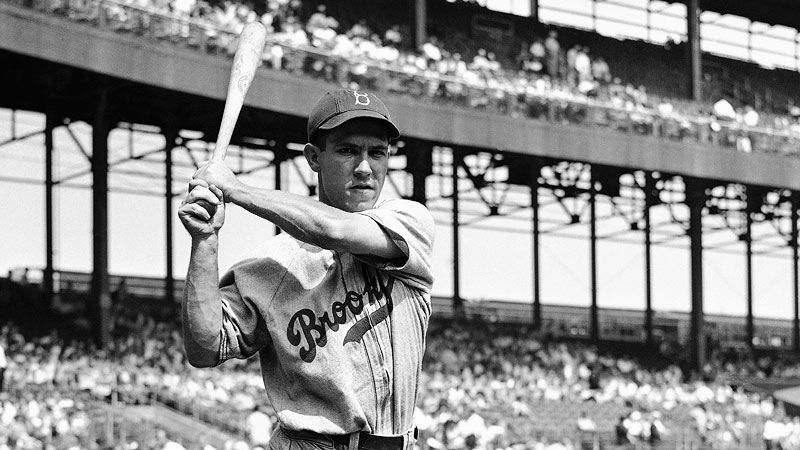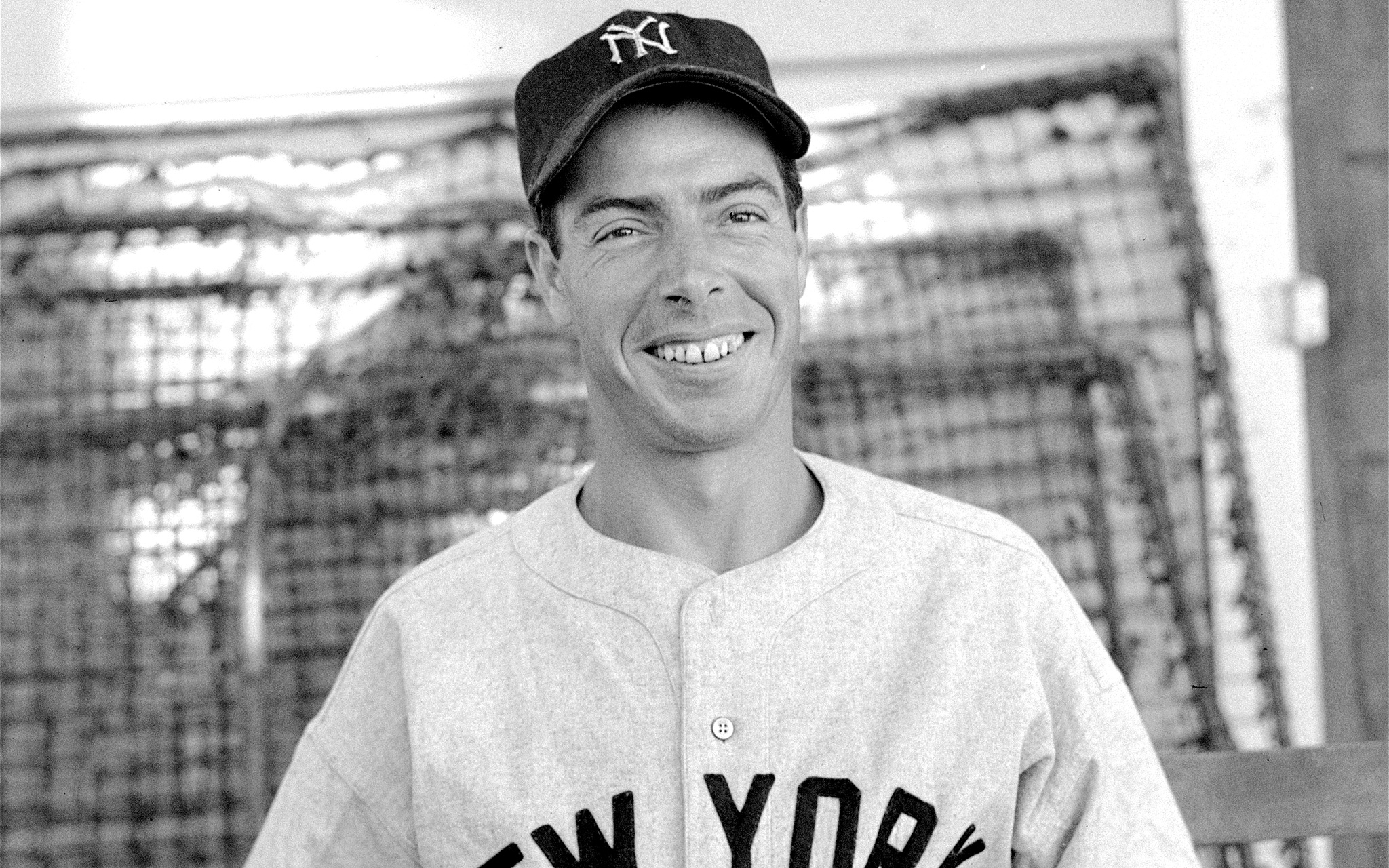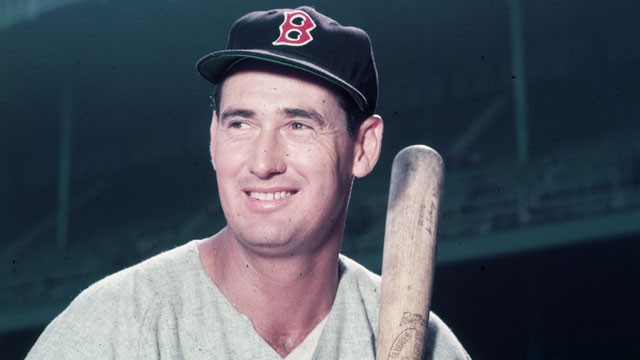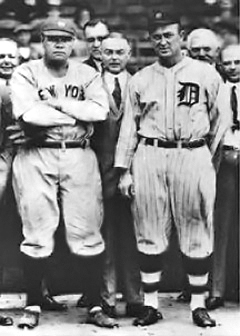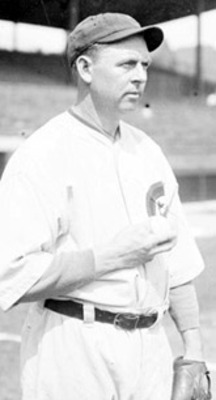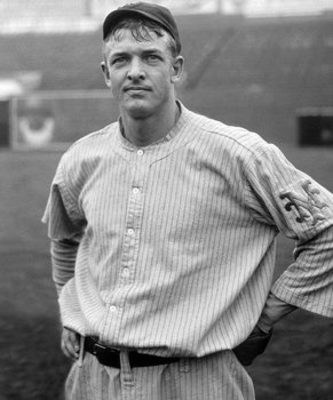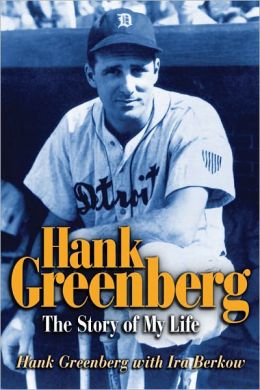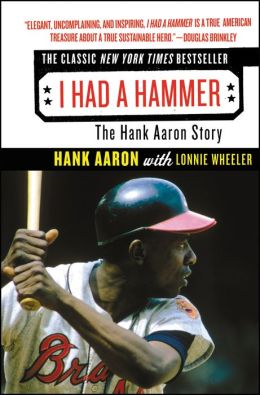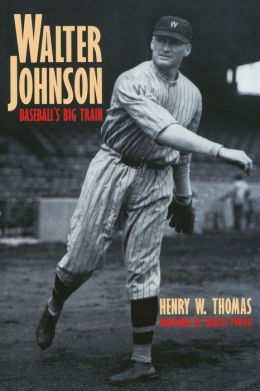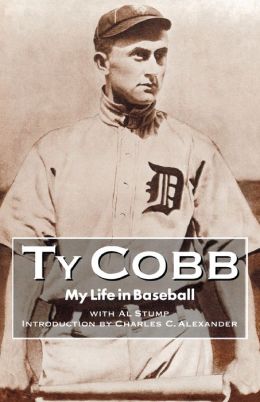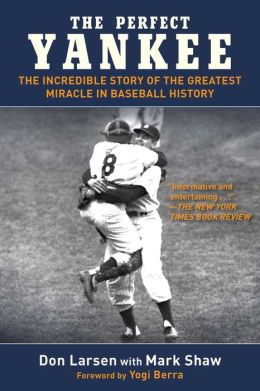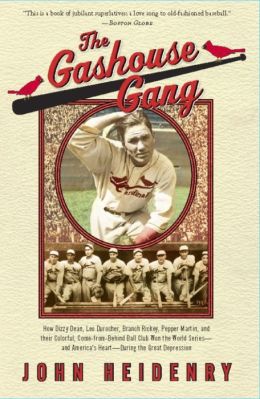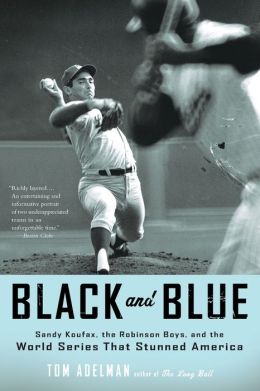We are heading into the off season for baseball and the time in between the end of the post season and the start of free agency for next season. Until about five years ago I wouldn't have worried about the long winter because I could at least get excited about football. I'll be honest, the NFL season just doesn't have the same excitement for me it did before the strike a few years ago.
Don't worry, there is still plenty of ways to keep you (and me) focused on the great game of baseball even during the winter months. I was asked last winter where I get most of my information and a very good friend suggested that I do a post about the books or resources that I use for the blog. I have honestly read over 100 books and have used close to 100 different DVD, game film and websites to gather my information so the list that follows is not comprehensive, it is just some of my favorite.
To give you some recommendations for reading material, holiday gift ideas or just plain better understanding of the history of the game I have broken them into two categories. First is the Biographies/Autobiographies. Please keep in mind that many times "autobiographies" are ghost written so the material may or may not be coming directly from the player/manager, etc. I have chosen my favorite Biographies/Autobiographies where the personalities of the figures shine through their words, whether written by them or not.
Second, I have chosen a list of Team/Season studies. As much fun as it is to read about an individual player's memories of a season or event, don't forget this is a team game so it is just as interesting to see how the team works together (or doesn't) and achieves (or falls short of) the ultimate goal.
Some of these books may be a surprise to you and some may be obvious choices (like the first book on the Autobiography/Biography list). Regardless, here are some book recommendations to help you through the cold off season winter:
Biographies/Autobiographies
Author: Hank Greenberg and Ira Berkow
Did you really think I'd go more than a few weeks without a Hank Greenberg reference? Greenberg was working with Ira Berkow on his autobiography when he passed away from cancer. Berkow had sent Greenberg a list of questions about events, seasons, teams, opponents, etc and had Greenberg tape record his answers. When Greenberg felt well enough between cancer treatments he would answer the questions and sometimes he would just give information outside of Berkow's requests. Regardless, it was great information. Berkow used Greenberg's recorded memoirs to fill out the book and complete the project. What comes out in the pages is the life story of a humble man who enjoyed his time in baseball as a player and executive and loved his children.
Author: Hank Aaron
Aaron's autobiography touches on the struggles he had coming up through the South Atlantic League in the 1950's, the winning days of the Milwaukee Braves and the trials and pressures of chasing Ruth's record. Aaron is one of the most likable people in baseball history and his personality comes across clearly in his story, making it even more difficult to accept the hatred he dealt with for doing nothing more than being successful.
Ya Gotta Believe: My Rollercoaster Life as a Screwball Pitcher and Part-Time Father and My Hope-Filled Fight Against Brain Cancer
Author: Tug McGraw
During his playing days, Tug McGraw was a household name in the Philadelphia and New York area due to his involvement in magical teams like the 1973 Mets and the 1980 Phillies. After his playing days he has become known more as the father of Tim McGraw. In his life story, McGraw discusses his career and personal life including his days with the Mets and the 1973 World Series, his days in Philadelphia, his struggle to form a relationship with his son Tim and his struggle with Brain Cancer. McGraw is humorous, likable and positive despite his health scare and provides great detail about the Phillies' first ever World Series Championship.
The Only Way I Know
Author: Cal Ripken Jr
Junior has always been open and honest about his influences, his motivation and his love of the game. This book is no different. This book discusses growing up with a father managing in the minor leagues, coaching in the majors and the excitement of playing for his father and with his brother in the majors as well as the disappointment of seeing his father fired and his brother leaving the team. Also discussed are the struggles of his rookie season, the transition from Third base to Shortstop and back, the playoffs and World Series of 1983 as well as the devastating losses of 1996 and 1997. Cal also discusses the 1994 players strike and the frustration of the cancelled season. Of course there is plenty of discussion of the streak. Ripken never claims it himself but in the age of steroids he was the reason to believe in the good of baseball.
Author: Henry Thomas
Written by his grandson who was too young to know his grandfather when he died, this is the definitive Walter Johnson biography. It traces the life of Johnson from his childhood in Kansas to the family's move to Santa Ana, CA, Johnson's travels through the minor leagues and his ultimate success as the "King of the Pitchers". Johnson spent years with the horrible Washington Senators yet still won more games than any pitcher in history, except Cy Young. Thomas provides great details of Johnson's personal and professional life and the chapters on the two
World Series appearances of the Senators are particularly spectacular. No detail is left out and no detail seems to be "fluff" material.
Author:
Ty Cobb and Al Stump
Parts of the book are about the strategy of baseball. Parts are descriptions of Cobb's approach to the game. Part is bitter. Part is hopeful. And part is a defense of his poor reputation. Cobb is definitely honest for better or worse in his life story. The book was written mostly by Al Stump who spent several years personally discussing the project with an elderly Cobb. Anyone who wants to make their own judgement of the legend that is Ty Cobb needs to read this. Stump wrote the version of the book that Cobb wanted (it was proofed and approved by Cobb himself) so we have no doubt that this is Cobb's mind. For an alternate perspective you can also check out Stump's biography of Cobb written about his experiences with Cobb during the project. Stump's biography was later used as the basis for the movie "Cobb".
Author:
Don Larsen, Mark Shaw and Yogi Berra
For a pitcher known as "googly bird" and someone who was never really considered an ace of any staff, Don Larsen has become famous far beyond the records of his career. This is the book of his life as well as his experience of pitching the only World Series perfect game. Larsen discusses his approach to the Dodgers, the joy of pitching and how he became the most imperfect pitcher to pitch a World Series perfect game. His discussion of technical mechanics of his pitching are intriguing but general enough for casual fans to understand. For example, he discusses how just one start before the end of the regular season he decided to abandon his wind up and pitch only from the stretch position for better control and how that effected his results, his confidence and led to his perfect game.
Extra Innings
Author: Frank Robinson and Berry Stainbeck
Intended as a response to Al Campanis's appearance on Nightline where Campanis declared that there were no African Americans in the front offices of baseball because no African American wanted a job that high, the book answers Campanis and so much more. From Robinson's troubles in Cincinnati, success in Baltimore (including the difficulty of being an African American star loved for playing baseball but still not being accepted in general society), Robinson is honest about his struggles with Angels manager Dick Williams, the benefit of what he learned from Earl Weaver and the difficult job of replacing Cal Ripken Sr and turning around the Orioles organization. Particularly interesting are his experiences with
Jack Clark, whom Robinson managed in San Francisco. Clark recently accused Albert Pujols of using PED's. Reading Robinson's view of Clark from 25 years ago may give you a different perspective of Clark's comments on Pujols.
I Never Had It Made: An Autobiography of Jackie Robinson
Author:
Jackie Robinson
If you are looking for a book only about baseball this may not be your choice. If you are looking for a book about the struggles of life, both professional and personal, and the strength that it takes to be successful regardless of continual road blocks, then this is it. Robinson, of course, discusses breaking the color barrier and his career in baseball but he also discusses the struggle of being a father and husband while being on the road for the better part of the year, attempting to give his family a better life while dealing with the racism of the times and the pain of losing his son just as the son was turning his life around. There is a reason that Jackie's number is the only one retired across the majors and it goes well beyond the diamond. If you ever thought that Jackie was over rated as a player you need to read this and it will probably convince you that he is historically under rated.
The Duke of Flatbush
Author: Duke Snider, Carl Erskine and Bill Gilbert
This book may not be in print any longer so you may have trouble finding a copy. I would suggest checking the library or used book stores. Duke discusses not only his on the field play but the struggles of paying bills in the days before the million dollar salaries on the salary of a minor league manager. He also discusses growing up as a fan of Jackie Robinson in Watts, CA, the struggles of the Dodgers to finally win the World Series, his hatred of the Giants (and Halloween) and the tight friendships that made up the special days in Brooklyn. Also discussed are Duke's final days in Los Angeles (with excellent details of the 1962 three game playoff between the Dodgers-Giants), his final days with the Mets and the odd feeling of ending his career as a Giant.
Seasons/Teams Studies
Author: Louis P. Mayer
This is a study of the formation of the American League, the war that resulted, the peace conference of 1903 and the first World Series. Each game of the series has it's own chapter and is explained in detail. The best of 9 series saw the American League's Boston franchise come back from a 3-1 deficit to win the first ever World Series. It also includes details of a near player's strike, JFK's grandfather and the greed of the owners that would effect the game for decades.
Author: Cait Murphy
It is hard to pick a favorite book of all the ones I've read but this one is definitely in the top five. The author does an amazing job of exploring the 1908 baseball season along with the political and social aspects of the US during the time. The non-baseball sections include the corruption around Chicago and a female mass murderer in Chicago. The baseball sections focus on the crazy baseball season which had a three team race in the NL that came down to
Fred Merkle's "bonehead" mistake and a three team race in the AL which saw Ed Walsh of the White Sox win 40 games.
Author: Mike Vaccaro
A great telling of one of the greatest World Series of all time which ended with Fred Snodgrass's dropped fly ball and a Red Sox victory. The author describes each game in detail as well as plenty of behind the scenes dealings and fights. The story of the 1912 Red Sox includes the amazing season of Smokey Joe Wood, the corruption that nearly cost the Red Sox their World Series title and how the ownership's greed nearly alienated their most loyal fans. The Giants' 1912 season includes the stories of Rube Marquard's emergence as one of the best pitchers in the National League and the Giants' support of Snodgrass after the misplayed fly ball. This was not only one of the most closely contested World Series, it is also one of the most controversial. Anytime controversy was involved in the first 25 years of the World Series, you can bet John McGraw was involved somehow.
Author: Elliot Asinoff
This study of the 1919 season and the
Black Sox scandal was the basis for the movie of the same name. Asinoff explores the plot, the actual throwing of the games, the revelation of the scandal and the trial in one of the most important seasons in the history of the game. Anyone who would like to truly understand the complex web of corruption that took place in this scandal should read this.
Author: Mike Sowell
This is more than a dual biography of
Carl Mays and
Ray Chapman, it explores the impact that the death of Chapman had on the Indians' team. It also discusses the 1920 pennant race between the Yankees, White Sox and Indians. 1920 is one of the most important transitional seasons in the history of the game and this season saw Babe Ruth truly emerge as the new force while the White Sox team was torn apart.
Author: Paul E. Dotrich
A great study of not just the baseball season of 1926 but many of the national events of the year including the death of Rudolph Valentino. The author does a great job exploring the pennant race in the NL, including the mutiny and collapse of the defending
World Champion Pirates and the first World Series title for the Cardinals. Baseball fans may know that the 1926 World Series famously saw Grover Cleveland Alexander (alternately rumored to be drunk or hungover) enter the seventh game in relief and work out of a tension filled, bases loaded jam against the rookie sensation Tony Lazzeri. If you have not heard of that famous at bat (or the bizarre way the series ended) this is a great place to learn more about it.
Author: John Heidenry
This book focuses mainly on the history of the St. Louis Cardinals, however, it is an interesting study of the Cardinals evolution from the perennial last place team to the most successful organization in the National League. The book gives a great perspective on the importance of
Branch Rickey before the Jackie Robinson signing and of course there are great Dizzy Dean stories. The book also gives great description of the 1934 World Series with Joe Medwick's fight with
Marv Owen of the Tigers and since this is the 1934 Tigers there is, of course, plenty of good Hank Greenberg information.
Author: Michael Shapiro
Anyone who has blamed Walter O'Malley for being a horrible, greedy, monster for uprooting the beloved Dodgers from the Brooklyn faithful and moving them to the West Coast must read this book. Besides looking at the struggle of the team to defend their World Series title,
Don Larsen's perfect game and the tight core group of the Brooklyn team, this book provides great detail of O'Malley's struggle to build a new stadium in Brooklyn and his desperation to avoid moving the team.
October 1964
Author: David Halberstam
Anyone who has read a book by David Halberstam knows that you cannot go wrong reading a book by David Halberstam. I nearly put another of his books (The Summer of '49) on this list as well, however, this one is my favorite of his work. The 1964 season saw the Cardinals transitioning from the days of
Stan Musial to the days of Bob Gibson. It also saw the mighty Yankees becoming a tired, declining older franchise as Yogi Berra moved into a managerial position and Mantle struggled through knee injuries. In a classic seven game series the state of baseball changed almost overnight.
Author: Tom Adelman
Similar to Halberstam, you can't go wrong reading a book by Tom Adelman. Adelman does a great job of tying in the stories outside the game. This is the story of the Dodgers team, led by Koufax and Drysdale, that appeared to be unbeatable as they faced off against the Baltimore Orioles team which was considered to be a middle of the league team. Particular focus is paid to the impact of Frank Robinson in Baltimore as he gets traded from the Reds. Focus is also given to Koufax and his struggle to come to terms with the damage he is doing to his arm and his desire to help his teammates win one last time.
The Long Ball: The Summer of '75- Spaceman, Catfish, Charlie Hustle and the Greatest World Series Ever Played
Author: Tom Adelman
Adelman's title says it all. This is arguably the greatest World Series ever (although I still think 1991 beats it). This book has everything. The Big Red Machine. The curse of Babe Ruth.
The birth of free agency. The rebirth of the Yankees featuring Billy Martin, Thurman Munson and George Steinbrenner. The decline of the Oakland dynasty of the 1970's. Even cameos by M.C. Hammer and
Willie Randolph. It includes the heart warming story of Luis Tiant seeing his parents for the first time in decades. It includes details of every edge of your seat game of the series. And of course, it includes perfect details of the greatest World Series game ever played, the
Carlton Fisk Home Run game. Even if you ignore every other piece of advice I give you (and let's face it all of you will) listen to this one. You must read this book.
The Bad Guys Won: A Season of Brawling, Boozing, Bimbo Chasing, and Championship Baseball with Straw, Doc, Mookie, Nails, the Kid and the Rest of the 1986 Mets, the Rowdiest Team to Ever Put on a New York Uniform and Maybe the Best
Author: Jeff Pearlman
This is one of the legendary teams of all time. The team had so much potential that it is almost unbelievable they only won one World Series as a group. Reading this will go a long way in telling you why they didn't win more. The focus is not just on the
1986 team, but in the building of the team. It includes great biographical information on many of the Mets including Strawberry, Gooden, Kevin Mitchell, Mookie Wilson and Sid Fernandez among others. The book is entertaining and informative and does a great job of chronicling the legendary team.
The Last Night of the Yankee Dynasty: The Game, the Team and the Cost of Greatness
Author: Buster Olney
Olney is one of the most respected baseball writers of our time and he has done a great job of following the Yankees dynasty of the late 1990's-early 2000's. Any Yankee fan (or just baseball fan) who wants to know more about the team that rejuvenated the nation's love of the game, this is your book. In reading this book I gained a whole new perspective on many players including Paul O'Neill, David Cone and Bernie Williams. I am not a Yankee fan by any stretch of the imagination but this book is one of the best I've ever read. It discusses the transition form Buck Showalter to
Joe Torre, from Don Mattingly to Derek Jeter and the eventual decline of the dynasty. 2001 was certainly one of the best and most emotional World Series ever and this will give you every detail.
TRIVIA QUESTION:
In today's article, I mentioned that the 1926 World Series ended in a bizarre way. How was the last out recorded?
ANSWER TO LAST WEEK'S QUESTION:
Congratulations to Hope and TJD for answering last week's trivia question correctly.
Anyone who routinely listened to Phillies games between 1971 and 2008 can tell you how good Harry Kalas was in the broadcast booth. He had a subtle humor that was remeniscent of Vin Scully and a professionalism that was remeniscent of Mel Allen. He had a great exaggerated "Struck him out!" call and "That ball is outta here!" call that have to be heard to be appreciated. Harry loved the Phillies (or the Fightin's as he often called them). One of Harry's favorite players was Garry Maddox. Maddox was often called the Secretary of Defense years before Reggie White became the Minister of Defense in Philadelphia. Maddox's range in Centerfield was nothing short of amazing. Maddox had to cover a lot of ground to make up for slower outfield partners like Greg Luzinski, Del Unser and Jay Johnstone. In fact, Maddox covered so much ground that Kalas said "Two thirds of the earth is covered by water, the rest of it is covered by Garry Maddox."

